Art & Exhibitions
Here Are 5 Exhibitions You Can’t Miss at Gallery Weekend Berlin
From colorful new sculptures by the esteemed Rachel Harrison to filmmaker Clemens von Wedemeyer's probe of Silicon Valley's mundanities.
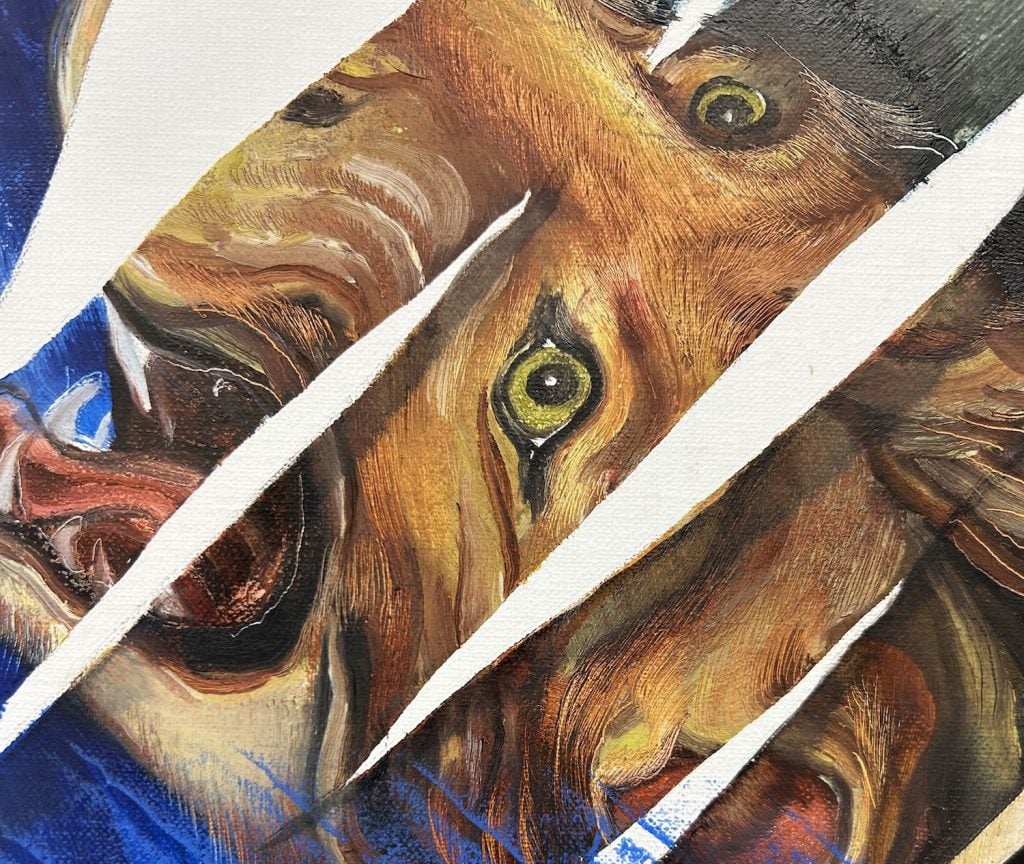
From colorful new sculptures by the esteemed Rachel Harrison to filmmaker Clemens von Wedemeyer's probe of Silicon Valley's mundanities.

Kate Brown

On the heels of the opening of the 60th Venice Biennale comes the 20th edition of Gallery Weekend Berlin, a city-wide initiative that includes scores of solo and group exhibitions around the German capital. This year’s edition is helmed by new director Antonia Ruder following longtime head Maike Cruse’s move to Art Basel, where she now leads the marquee Swiss edition of the fair. With some 50 galleries presenting brand-news shows this weekend, there is a lot to see—but amid the swirl, here are five shows you shouldn’t miss.
Clemens von Wedemeyer’s “Social Geometry” at KOW
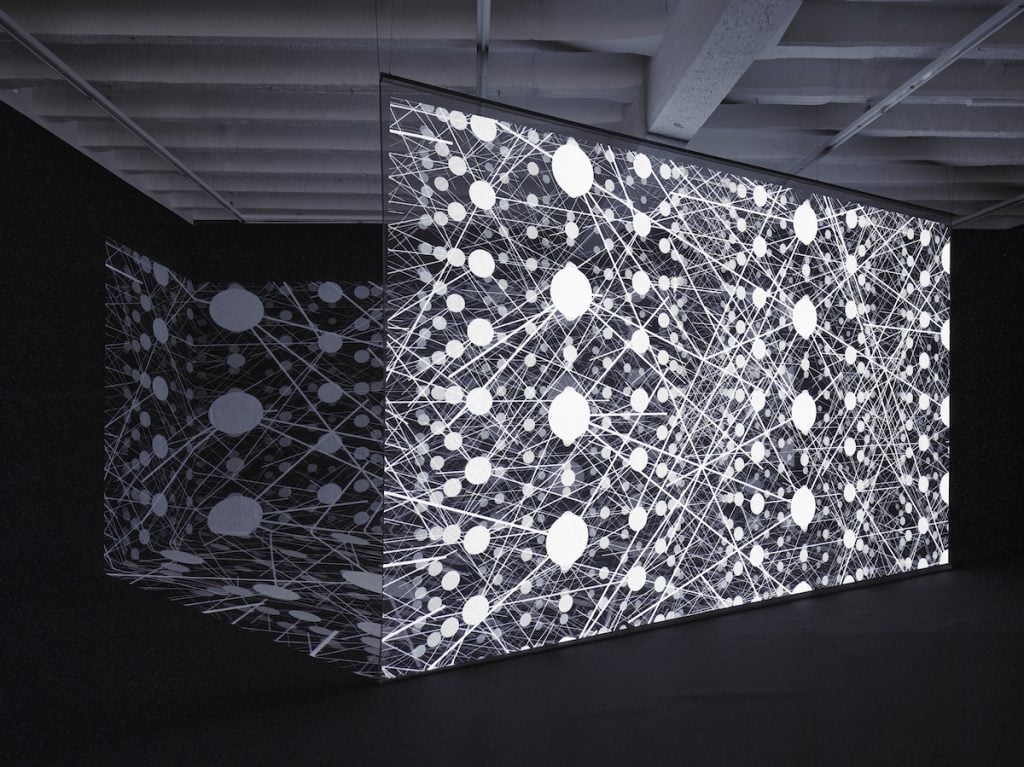
Installation view of Clemens von Wedemeyer, Social Geometry (2024) at KOW, Berlin. Photo: Ladislav Zajac. Courtesy the artist and KOW, Berlin.
The German filmmaker has a longstanding interest in social groups and the behavior of the masses. Speaking to those macro themes, he’s again made a comment with his new show, though there is no mob or crowd in site as there has been in works of the past.
Calm and mundane scenes taken from around California, from Meta’s manicured HQ to a dusty landscape at Desert X, or the hilly streets of Palo Alto with their sloped driveways and sea views, become unsettling over time in von Wedemeyer’s new video work Surface Composition, one part of his exhibition “Social Geometry.” A camera hovers, neutrally observing the minutiae of a place that has, in many ways, had the greatest impact on our society and psychology in this century. But the work does not explicitly moralize; instead, it simply gazes on at the details of the physical landscape and people and intersections that have in some indirect, intangible way, shaped the virtual world.
The scenes in Surface Composition could be read like a backstage of our society, which is increasingly migrating onto online platforms that are headquartered in California. The front stage, then, is the titular work of the show, a large immersive video installation that beams a series of abstract nodes that twist, expand, and flicker on screen, cascading against you as you walk through the space. A disembodied voice (which just so happens to be that of the inimitable poet Anne Clark) describes a rapidly entangled network of human impulses, of changing habits, of news as gossip, censorship, and total surveillance. Through poetic simplicity, von Wedermeyer captures what is most unnerving about our era: how the profundity of the change we are living through still eludes us.
Rachel Harrison’s “Bird Watching” at Konrad Fischer Galerie
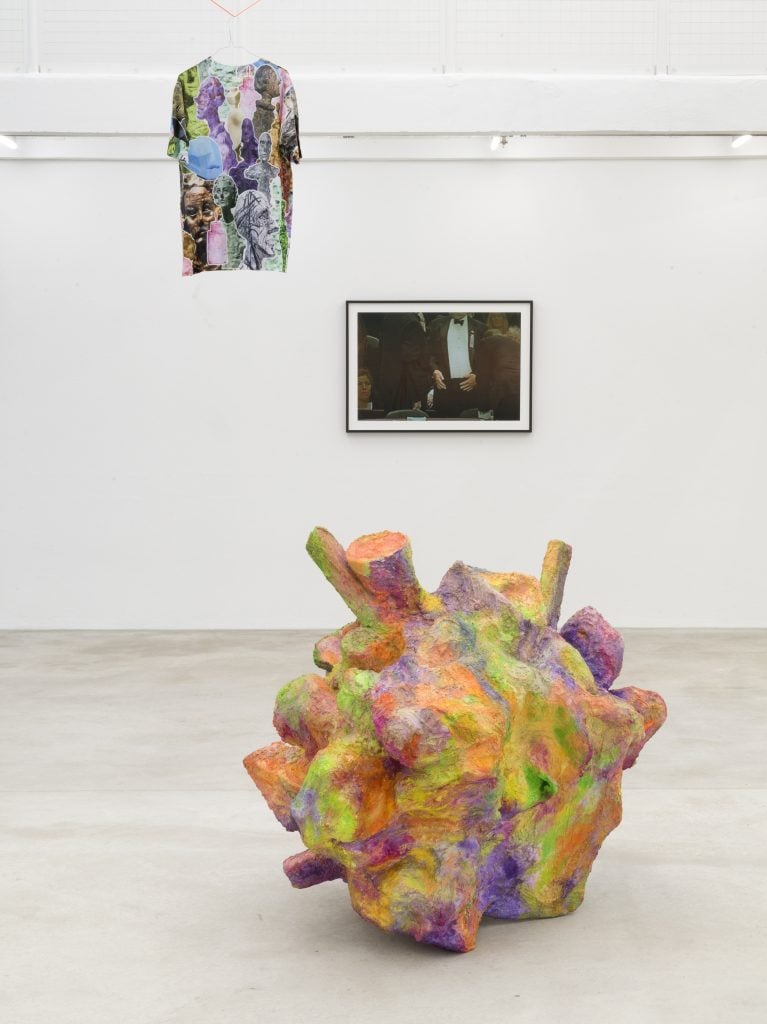
Installation view of Rachel Harrison’s “Bird Watching” on view during Gallery Weekend Berlin. Photo: Roman März. Courtesy the artist and Konrad Fischer Galerie
The sculptor and artist is a star in my books, a conceptual and poetic trickster whose work pries at the strangeness of high and low culture with poignancy and wit. In “Bird Watching,” there are no birds to be watched, but rather it is the curios of human nature and society that is being drawn up in front of us and formed, filtered, and collaged in various ways onto Harrison’s brilliantly executed sculptures, photographs, and a cheeky new video work.
Nothing seems out of bounds when it comes to what is borrowed, yet it is meticulously mixed in and it all blends perfectly: Stanley Quenchers (those titanic mugs that went viral earlier this year) are juxtaposed against remakes of Giacometti sculptures, one of which is wearing glasses on the back of his head in a clever nod to bro culture but also, perhaps, in homage to Isa Genzken. In view from there are large-format photographs that Harrison made by capturing a televised dog show. These ephemeral photo prints almost seem holographic as you walk near them and reveal themselves the longer you look—fingernails scratch the film, a ghostly dog appears in another—as if the images were being burned into the negative in real time.
Content is layered over and over itself through Harrison’s artistic processing and through relations with other elements in the show. Everything is slightly off-kilter. What gets historicized or becomes valuable, and what is ultimately non-precious and detritus, is completely thrown on its head.
Sung Tieu’s “Perfect Standard” at Trautwein Herleth
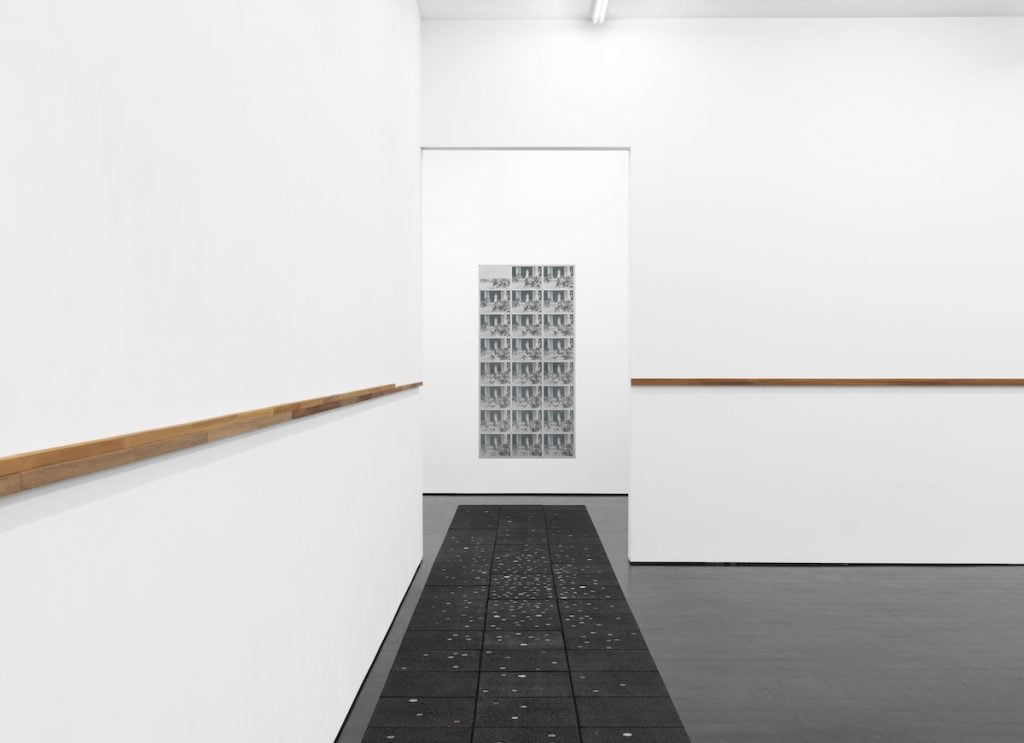
Installation view of Sung Tieu’s “Perfect Standard” at Trautwein Herleth. Courtesy of Trautwein Herleth.
The devastations wrought by extractive colonialism are vast and wide-ranging, but German-Vietnamese artist Sung Tieu keeps a tight aperture in her new exhibition “Perfect Standard,” taking an empirical approach to express how seemingly mundane administration was used as a tool for domination.
A thin line of measurement sticks bisects the entire gallery at Trautwein Herleth (formerly Barbara Weiss), a brutal incision by Tieu that heightens a lurking notion of violence. Two different wooden rulers stacked on atop the other stand in for how, through the seemingly neutral tools of bureaucracy and administration, one society imposed itself onto another, in particular France’s colonial rule over Indochina (modern day Vietnam, Laos, and Cambodia). Currency is smushed into a walkway of rubber—the material was one of the raw materials extracted by the French via most unfair dealings—that runs the inner perimeter of the gallery. It nearly feels like an existential walk on the plank into the past, leading visitors to a pair of wall works depicting a second-long scene from the late 19th century. A French colonizer is tossing coins at local children, an act that is vile but seems to have occurred under the auspices of benevolence, as implied by the work’s title, The Opposite of Good is Good Intentions.
In the series of ruler works, variously called “The Ruling,” one set of sticks includes the indigenous measurements that were formerly used in the region while the top lines plots out the European metric system. There is a seven-centimeter difference between them. In many business dealings in the colonial regime, the difference was negated, meaning an unaccounted surplus was continually scooped by the French. Out of this replication of this precise difference, a negative space intermittently occurs in her sculpture, a mathematical gap that expresses an unquantifiable amount of injustice. It is a white space that bleeds all out to rest of the walls, spiraling into a formless scream.
“territory” at Sprüth Magers with works by Mire Lee, Liu Yujia, Gala Porras-Kim, Tan Jing, Zhang Ruyi
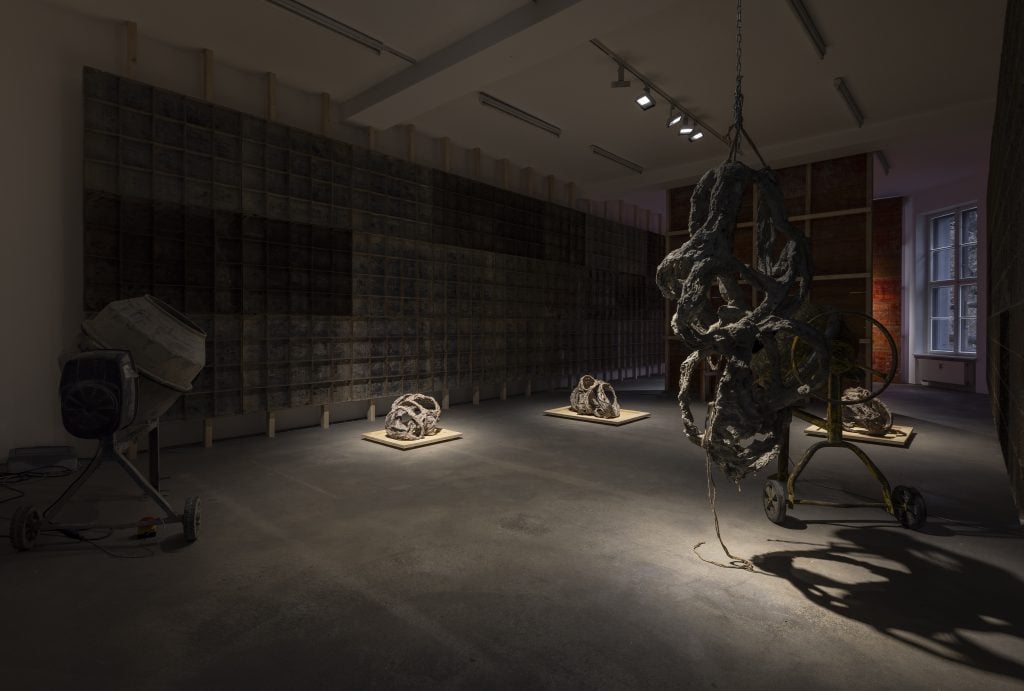
“territory” Installation view of Mire Lee. Sprüth Magers, Berlin, April 27–June 29, 2024. Photo: Timo Ohler. On view during Gallery Weekend Berlin.
Shi-ne Oh, head of Asia and Senior Director at the gallery, has put together a deftly curated exhibition of museum-quality work contemplating notions of borderlands. As the shadows of conflict continue to spread a dark sense of anxiety globally, “territory” meets the moment, exploring boundaries as shifting psychological sites as well as political, ecological, and even intimate.
Much of the work in this show feels like it is breathing. In some cases this is actually true: Gala Porras-Kim’s spore-laden work includes mold collected from the British Museum. The microbes are thriving well on this work, called Out of an instance of expiration comes a perennial showing (2022/24). On a top level, it jests at the lack of care that’s been made apparent at the British Museum with all its recent scandals sullying its reputation. But the entropy of the work also speaks most poetically to the decay of the colonial legacy and the so-called universal museum.
And I won’t soon forget the noise of Mire Lee’s rehang of 2022 installation Look, I’m a fountain of filth raving mad with love, a sonically invasive space you step into that is very nearly dark, which feels like a forgotten construction site or a buried memory. Concrete mixers come to life intermittently, violently spinning at odd intervals. Lee brings the borderland to its most intimate zones—the artist said the kinetic sculptures stand in for mouth and assholes. In another part of the installation, visitors can pull up fleshy looking curtains to read concealed fragments of poems, part of a work of poems Lee is publishing later this year.
This show is poetic but deeply political. “We are fed with news 24 hours all around the world and we are constantly here but not here,” commented Shi-ne. “[W]hat is a territory, who defines it, do I belong in my own territory? Is there such a thing?… As a Korean native, this is a question that resonates with me deeply.”
Alex Carver’s “Expanded Skin” at Kraupa-Tuskany Zeidler
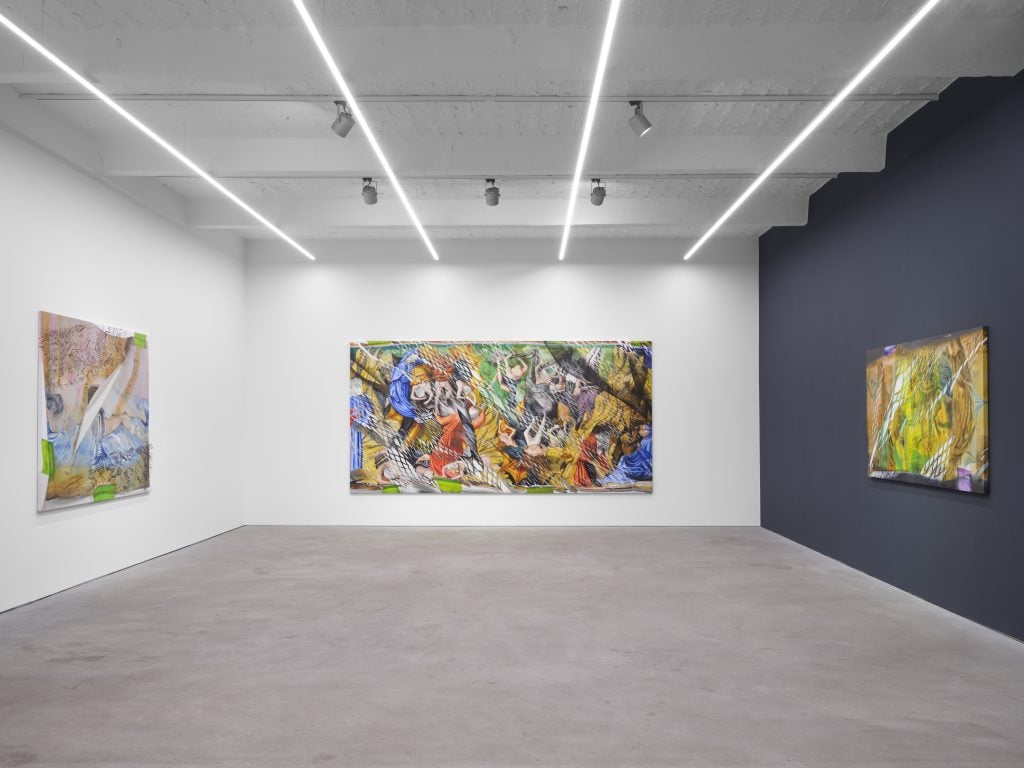
Alex Carver, exhibition view, “Expanded Skin,” Kraupa–Tuskany Zeidler, Berlin, 2024. Courtesy the artist, and Kraupa-Tuskany Zeidler, Berlin. Photo: Marjorie Brunet Plaza.
Suffering is a constant condition that is made explicit in Alex Carver’s paintings. It is unrelenting. His large-scale paintings, which hang on walls or are tautly suspended on wire cables in the middle of the gallery, depict what is simultaneously beautiful and cruel, capturing something precisely horrific in a blend of painterly styles.
Carver reflects and refracts many moments across art history, in particular its more dysmorphic tendencies: one can detect an homage to Lucio Fontana’s slashed paintings. But Carver does something more brutal when he paints these modernist slices across his scenes, never letting us forget how painting is just a picture, that it’s always just surface.
These are works worth seeing in person because they play with flatness in a most curious way. Several works mirror the maximal logic and figures from Hieronymous Bosch and other medieval scenes. In other parts of a painting, one can pick up a call back to the opulent flowing drapes and clothing folds mastered by Titian, which are skillfully copied in here. Speaking of copies, Carver’s meticulously layering tactics include frottage, pulling in whiffs of patterns and imagery using a technique of rubbing a pattern onto a canvas, officially developed by Max Ernst in the early 20th century, but which we all probably did at some point in the autumn with dried leaves as children. This chorus of references could edge on cacaphony, but Carver holds it together. Anyway, we are fluent in this kind of chaotic flush of images now, where we swipe past brutality and then onto beauty in an instance online, managing our emotions through a constant stream of virtual images that are spliced together. Carver, refreshingly, brings us back to an edge.